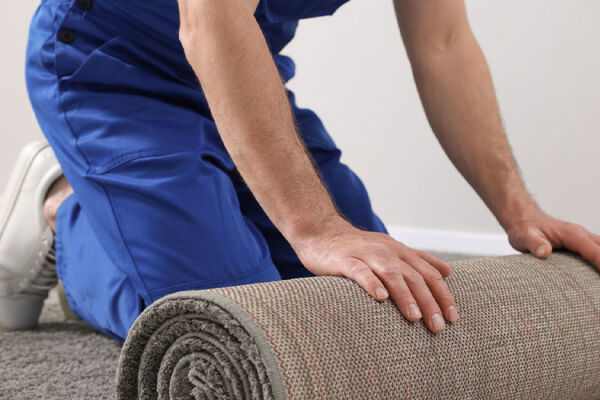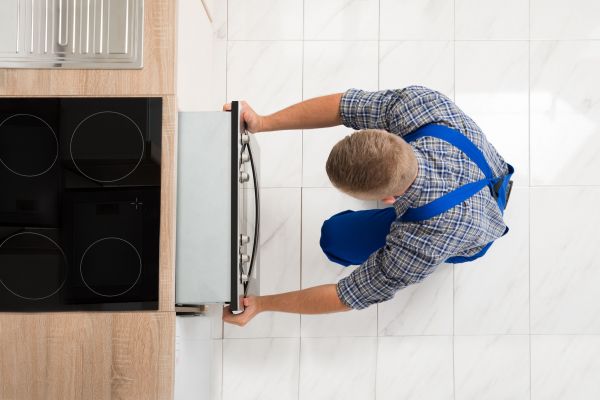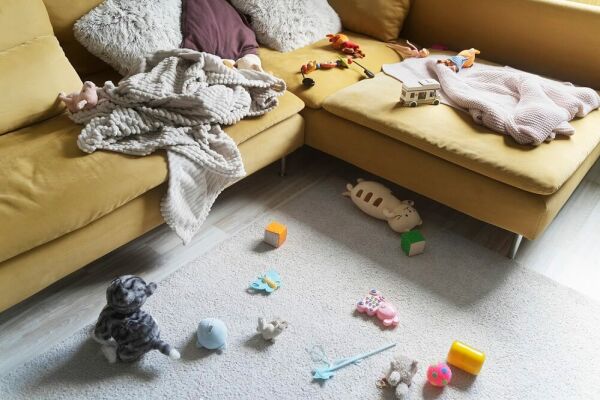Whether you’d do anything to avoid decluttering and tidying or it’s a hobby that you look forward to tackling, organization and organizational problems haunt us all. Lack of storage space and too much clutter are some of the most common challenges to overcome when trying to organize your home, so let’s break down those issues in finer detail and take a look at some practical home organizing solutions:
Problem 1: Clutter piling up
Picture this: Either you’re partway through a task and you are interrupted, or you come in the door loaded up with stuff. Chances are, you’re going to drop everything in the easiest place available at the moment. Maybe you get to it later, but more likely you don’t. Repeat.
No judgement—we’ve all been there.
If this sounds like a familiar pattern, clutter will start to build up and become more and more daunting to deal with. It’s no longer as simple as putting a few items away—it’s an official pile, bordering on a mound, with aspirations of a mountain.
Solution
The key to dealing with clutter piles is to prevent clutter pile-up from the beginning, which means having a place for everything and ensuring it is a place that will actually be used. Pay attention to where you are putting things and where you naturally reach for them. It may not make sense to visitors or even other members of your household, but these are the places where you should store these items because they will actually be used.
Here are the most common sources of clutter and some solutions to get you started:
- Dirty laundry - In addition to your laundry hamper, place a bin in your room for items that have been worn but are still clean enough to wear again. This will keep you from having to dig through a pile of dirty laundry to find those jeans from two days ago.
- Papers and mail - If you don’t want to invest in a paper sorter, a simple box to dump your papers in and keep them in one safe place for organizing later will suffice.
- Children’s toys - Have a box in each room so you (or your children) can quickly round up the toys laying around and put them away when playtime is over.
TSI TIP: Try rotating your kids’ toys by storing some toys in opaque bins or in a different space in your home for a month or two. When you bring them out again, they’ll seem like a brand new toy. If your kids aren’t interested, it’s time to sell, donate, or trash that toy.
Learn more about playroom organization.
Problem 2: Limited counter or cupboard space
Whether you’re dealing with a small kitchen or a bathroom with a pedestal sink, you may find yourself with limited counter space and cluttered cupboards. This can make your kitchen, laundry room, and bathroom(s) particularly prone to collecting messes.
Solution
Get a handle on the disorder by:
- Paring down your goods and belongings to the essentials. Anything expired or that you don’t use should be thrown out or put in a long-term storage location if it’s something you can’t part with.
- Using every surface available to you for storage, including on top of the fridge, seemingly useless weird nooks or crannies specific to your home, the space between the side of the fridge and the counter/wall, on top of cupboards, the wall itself, the ceiling, etc.
PRO TIP: If you’re wary of putting too many holes in your walls, consider installing a pegboard a la Julia Child. Her approach is great because it clears up space from your cupboards and counters, as well as encouraging you to put the items back once you’re done.
- Taking your organizational and storage tools vertical. Consider installing ceiling and wall hooks, wall-mounted shelves, magnetic strips, wire rack shelving, etc.
- Utilizing the space you do have by keeping it organized with boxes, bins, or baskets.
Problem 3. Lack of mudroom/front hallway
While this is often typical of smaller homes, you may not have the mudroom or front hallway closet space that you need in any size apartment or house you find yourself living in. This is especially true if you are a collector of coats and shoes.
Solution
A lack of mudroom or front hallway is one of the trickier organizational problems to solve because the space can be extremely limited and there may not be any room to expand, but you do have some options:
- Only keep seasonally appropriate items in your front hall closet. Store the rest of them in vacuum-sealed bags or bins in your crawlspace or basement. If you don’t have a basement or a crawlspace, consider storing them under your bed.
- Hanging shoe organizers can be used to reduce clutter on the floor and the top of the hall closet by storing shoes and seasonal accessories such as scarves, hats, and mittens. Mount it on the wall near the door so it is quick and easy to grab the appropriate items on your way out and store them when you get in.
- Remove the door from your front hall closet so you can quickly access hangers and shoe racks to put your coats and shoes away easily.
- Remove items from your closet that can be stored elsewhere, such as vacuums, vacuum components, brooms, clothing items that could be kept in a bedroom closet, road salt, etc. Try to keep your front hall closet limited to items you need as you are entering and exiting the home.
- Get creative with seating. If you need a bench for taking off and putting on shoes, make sure it has storage space built in so it can pull double duty. If there is absolutely no room for a bench, place it as close as possible to the door or consider moving it onto a covered porch if you have one.
Problem 4: Crowded drawers
Whether you can’t get your kitchen drawers open (or closed), your bathroom drawers are stuffed with products and tools, or you can’t find the right item of clothing without taking everything out of your dresser, your drawers can easily become crowded and disorganized.
Solution
Dig everything out and:
- Hang kitchen utensils on a rack on the counter or from hooks on the walls, or invest in a magnetic knife strip. Keep your most frequently used cooking tools out of the drawer where you can easily grab them. This approach can be used in your kitchen as well as in your bathroom for storing beauty tools such as a hairdryer, curling iron, or electric shaver.
- Take a new approach to folding clothes. Rather than folding and stacking your clothes on top of one another, take a page from Marie Kondo’s book and fold and stack them beside each other vertically in rows. This way, you can easily see everything in the drawer and remove it without making a mess of your other items.
- Clear out your beauty products and tools. Most cosmetics and skincare products have a use-by or period-after-opening (POA) symbol and date listed on their jars. This symbol looks like a jar with the lid off and has a number written on the jar base followed by an M. The number indicates how many months the product is good for after opening it. If you never noticed it before or you didn’t know what it meant, now is the time to sort through your products and properly dispose of anything that is past its prime or that you aren’t using.
Problem 5: You can’t find what you need
Who hasn’t torn their house apart, destroying neat, unsuspecting nooks and perfectly organized crannies in an effort to find an item that they stored in some unfathomable spot thinking they’d be able to find it easily later? It may have seemed like a good idea at the time, but memories are fallible, especially if it’s a spot that you don’t use regularly or that doesn’t really make sense for your system.
Solution
Save yourself from the lengthy destroy-and-rebuild cycle by:
- Keeping like-items together. This way you will have everything you need all in one place.
- Putting things back in the same place every time after you are finished using them.
- Storing items in the room where you use them when you can. When you can’t, place them in the next logical spot.
- Clearly labelling your storage bins with the items they contain. Better yet, use clear bins so you can quickly see what’s inside.
- If you have to store things under beds, make them easy to pull out and try to organize them in such a way that you can see what’s under there without pulling everything out.
Problem 6. Recycling, compost & garbage
If you don’t have an attached garage handy, sorting out where to store your waste bins can be tricky.
Solution
Logically, many people store recycling and garbage bins under the sink in their kitchen cupboards. This is an excellent solution if you have the space and it isn’t inconvenient. If not, you may need to resort to visible bins:
- Choose bins that have a slim profile so you can keep them against a wall without taking up too much space.
- Alternatively, opt for stackable bins in a corner or other spot that makes sense with your layout.
- Rather than having multiple bins taking up space, put all of your recycling into one bin and sort it into its appropriate container later.
- For compost, use a small, scent-sealing container that can easily be carried and emptied regularly. Consider mounting it to the cupboard door opposite to your garbage if possible. If there isn’t space for it under your kitchen sink, keep it on your counter where it will be easy to grab and use whenever you’re prepping meals.
PRO TIP: Put a plastic recycling bag in your recycling bins even if you don’t use the bag to dispose of them. This will keep your bins clean in the event that someone doesn’t rinse out a can well enough and save you from having to wash them later.
How to Organize a Cluttered House: Conclusion
If you’re struggling to stay organized, something isn’t working and it’s time to reconfigure your setup. Keep on top of the clutter and tackle these common organizational problems by:
- Getting rid of unused items
- Using organizational tools to make the most of the space you do have
- Increasing usable space with mounted shelves and hooks
- Having a container for storing like-items that you don’t have the time or energy to organize right now
- Storing items where you need them to be and in the rooms where you use them
- Trying a new approach for folding and sorting items in drawers
- Using stackable, clear containers so you can quickly find what you’re looking for
Get more tips for organizing your home with our organization series.




